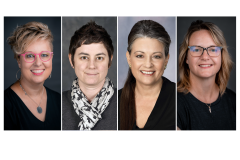Cultivating Balance in Life, Classrooms, and Community Through Wholehearted Teaching
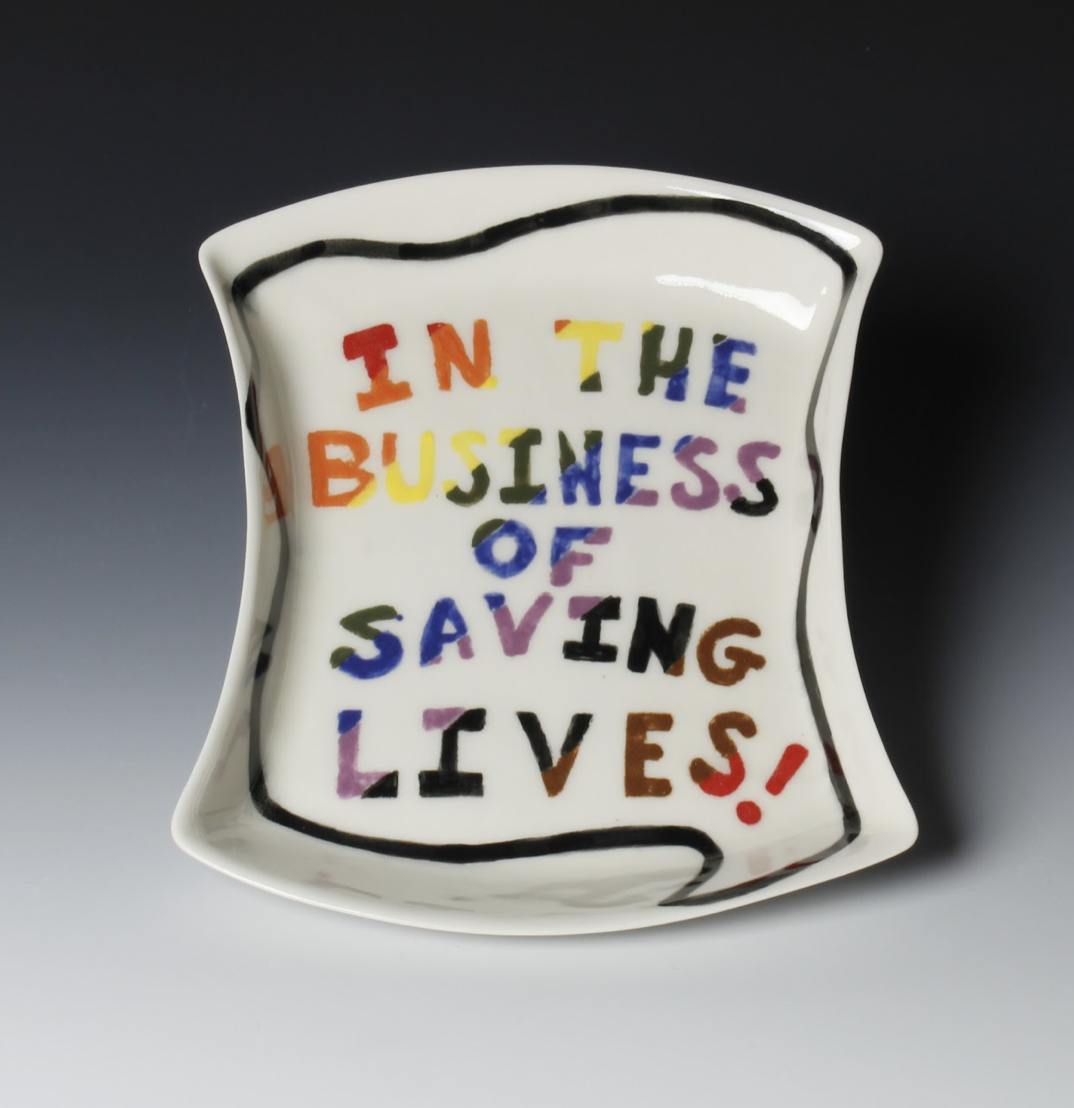 Brave and generous, Heather Mae Erickson’s progression through art, life, and teaching exemplifies awareness, acceptance, and connection centered around clay, craft, and a caring learning community. Sparked by the isolation of the COVID-19 pandemic, Erickson, a Western Carolina University (WCU) ceramics professor, created a Facebook group aimed at gathering like-minded educators seeking to enrich their lives and teaching, which evolved as ideas flew across the country into an interdisciplinary, intercollegiate research group. In this safe space, members allowed themselves to be vulnerable and build trust by offering inspirational teaching techniques geared towards learning and growing with their students and communities. They became wholehearted learners as well as teachers.
Brave and generous, Heather Mae Erickson’s progression through art, life, and teaching exemplifies awareness, acceptance, and connection centered around clay, craft, and a caring learning community. Sparked by the isolation of the COVID-19 pandemic, Erickson, a Western Carolina University (WCU) ceramics professor, created a Facebook group aimed at gathering like-minded educators seeking to enrich their lives and teaching, which evolved as ideas flew across the country into an interdisciplinary, intercollegiate research group. In this safe space, members allowed themselves to be vulnerable and build trust by offering inspirational teaching techniques geared towards learning and growing with their students and communities. They became wholehearted learners as well as teachers.
Wholehearted Teaching
What is a wholehearted teacher or learner? Increasingly, educators are moving beyond teaching knowledge-based curricula and striving to help develop the whole person. A comparison of current and previous teaching evaluation tools shows an increased value placed on approachability, faculty interest in students’ understanding, discussion, respect, and experiential learning rather than the siloed learning of skill or knowledge.
The wholehearted teaching model evolves from author and research professor Brené Brown’s experience with self-esteem, compassion, and vulnerability in a raw, self-help book titled The Gifts of Imperfection.[1] In the pursuit of achieving these three tenets, Brown recommends living by the guideposts of wholeheartedness, allowing individuals to live with the feeling that they are enough by cultivating the following:
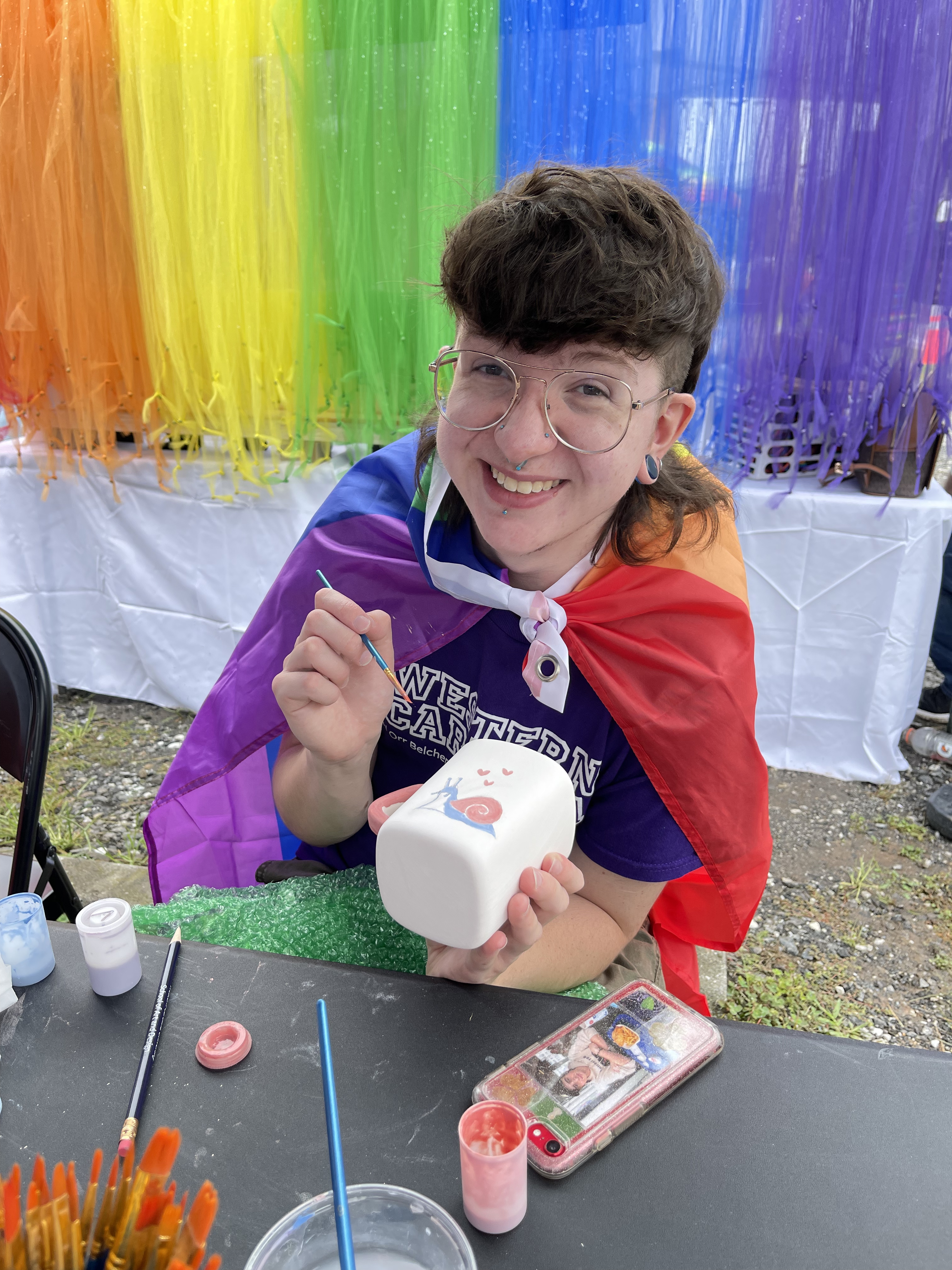
-
authenticity
-
compassion
-
resilient spirit
-
gratitude and joy
-
intuition and trusting faith
-
creativity
-
play and rest
-
calm and stillness
-
meaningful work
-
laughter, song, and dance
Those looking to live wholeheartedly release thoughts about what others think, perfectionism, comparison, productivity as self-worth, and self-doubt. They suppress the feelings of numbness and powerlessness, scarcity and fear of the dark, uncertainty, comparison, and the need to be always in control. Wholehearted living does not have room for anxiety and exhaustion used as a status symbol; instead, choosing the thoughts, behaviors, and feelings of the wholehearted lifestyle results in worthiness and satisfaction.
Erickson: “During my change in life and perspective, I luckily came across Brown’s Netflix special and research. When I started reading her book, The Gifts of Imperfection, I was so engaged because I felt like she was talking directly to me. I started reading through her books and noting other writers she referenced. I listened to every podcast, interview, and TEDTalk I could find on Brown. I put into practice her challenges and findings in my daily life and also within my classes. I created handouts and gathered interviews and talks for students to watch. We began to share weekly, and I was like a little "Brené whisperer." It built community in the classroom. It also helped me form deeper connections with my students because they were starting to feel more comfortable sharing their vulnerabilities. We cried, we shared, we laughed, we nudged, we squirmed, we created, and we ate.”
Educator and blogger, Alison Smith, defines wholehearted teachers as those who "are completely engaged but not overly wrapped up in her students’ lives; set themselves up to succeed; are healthy in mind, body, and soul; have work/life balance without guilt; understand and acknowledge their needs; live their lives ‘on purpose’; like to see others succeed; don’t compare themselves to others; laugh at themselves; take risks and fail forward; live in the present; don’t try to get their needs met by their students, peers, or administrators; and many more healthy traits."[2] She developed a modified list of Brown’s guideposts for instructors that defines what wholehearted teachers cultivate: balance, self-care, healthy eating habits, a peaceful environment, community, gratitude, authenticity, as well as cultivating their inner world, their passion, and their purpose.
Additionally, Smith claims wholehearted teachers don’t let how far they have to go stop them from taking the first step. When educators stop expecting their job as educators to meet their needs and instead address those issues in their own lives, they own their role in meeting those needs. They are able to simply live and teach from a wholehearted, deep, and wonderfully authentic place. It takes vulnerability, but the outcomes are worth the risk. They cultivate spaces for story-sharing and reflection, resulting in both a practical guide for implementation and a call for care and deeper human connection, which happens in the community. The kind of community that teaching and learning require will also help renew and express the capacity for connectedness at the heart of authentic education.[3]
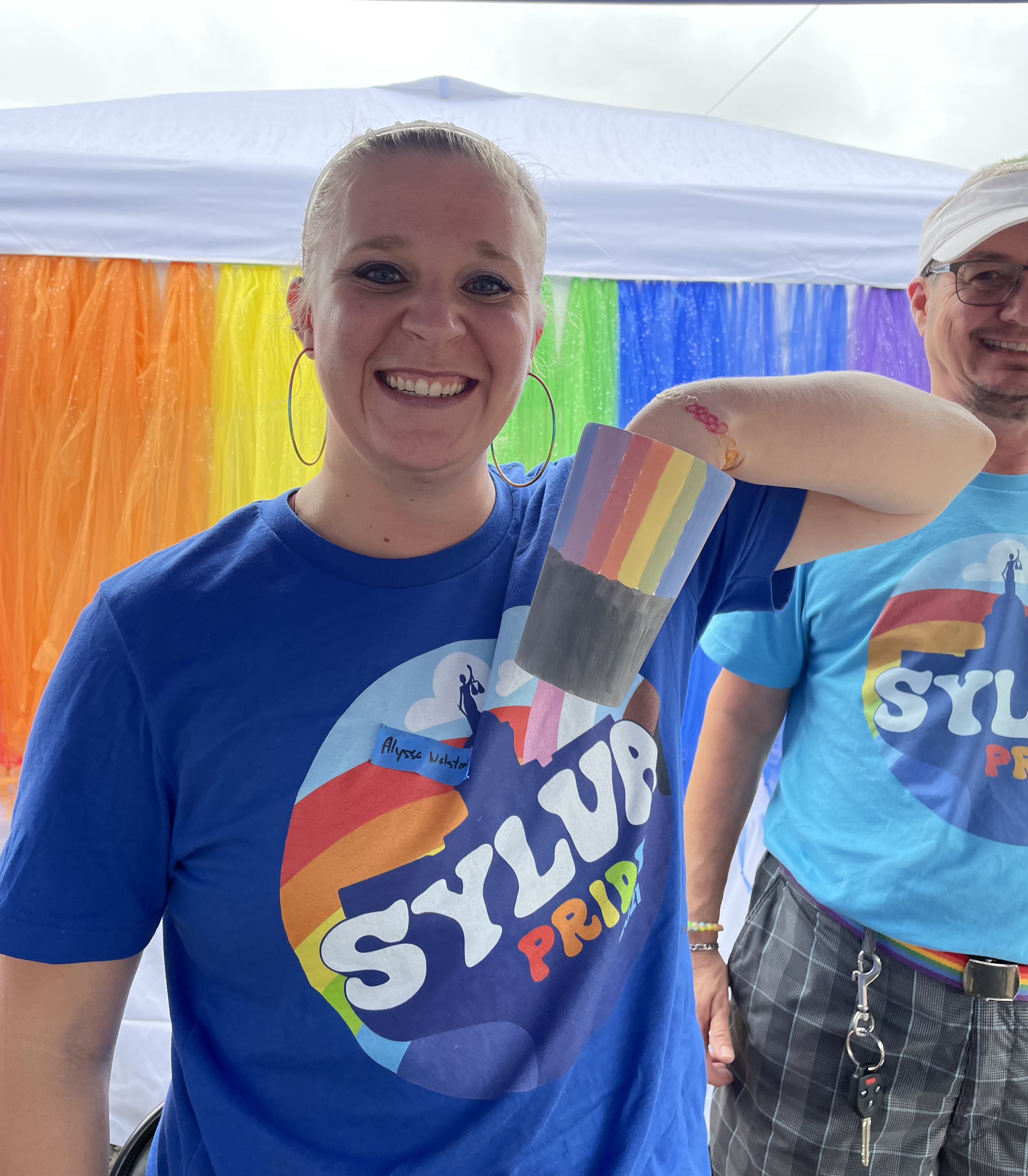
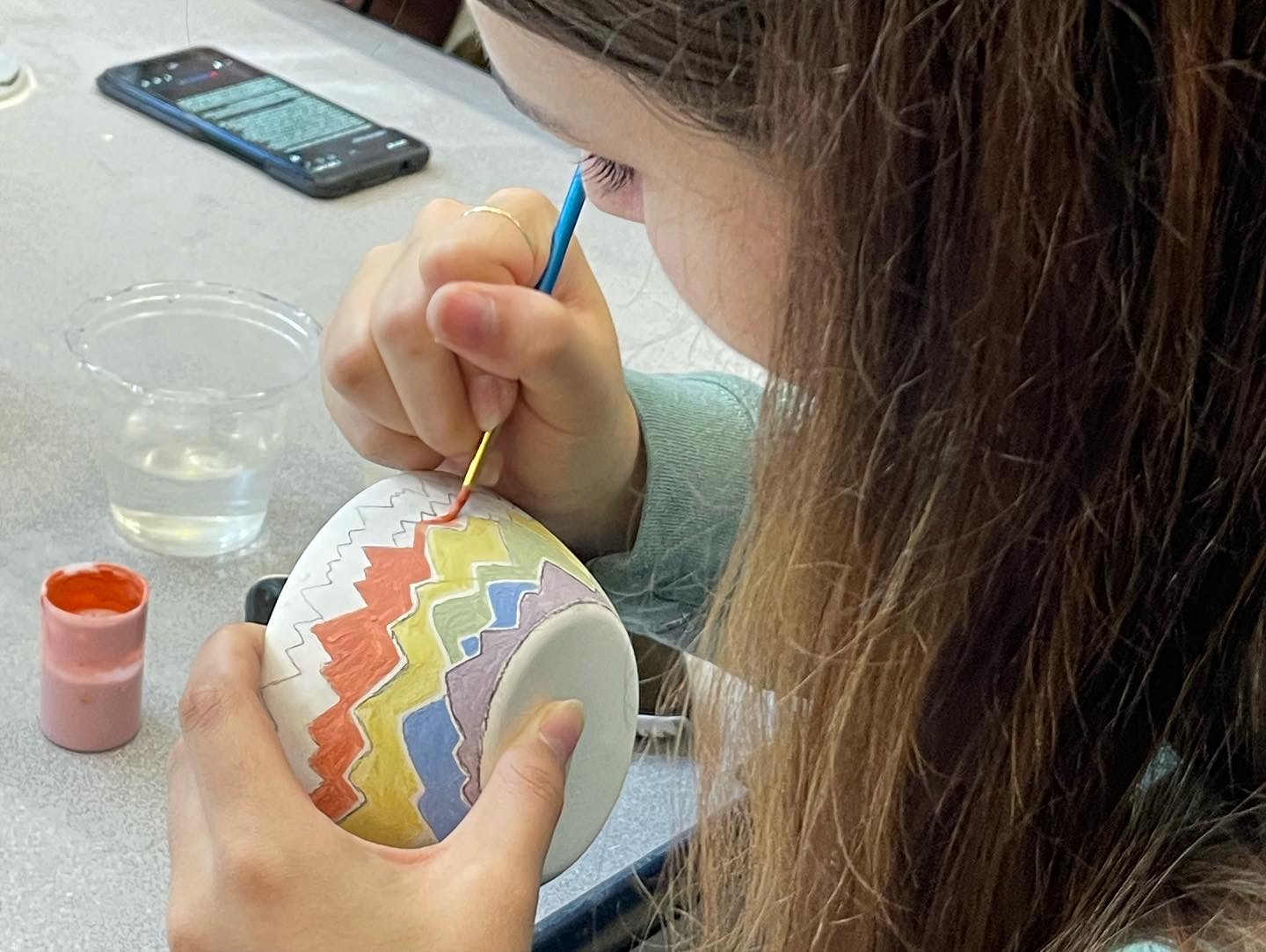 Erickson cultivated a space for story-sharing and reflection to create deeper human connections by empowering students to develop projects that benefit others. One project emerged – Pride Pots: Community Conversations – wherein Erickson genuinely embraced and linked the Boyer Model of teaching, service, and scholarship for this collection of ceramic work. Erickson said it felt natural to transition this project into a community-building art experience centered around hard conversations. These experiences consist of groups where community collaborators are introduced to the project and sign in with their names and social media or email addresses. Each individual is asked how they identify, their ages if they wish to share them, and their professions. Event organizers explain that their "official artists’ portraits," which include names, identities, ages, and professions, are displayed with their hand-painted Pride Pots at exhibitions to help share their stories. The painting of the pots is the most important part of the event because this is where the conversations around meeting and the opportunity to engage with different people occur. The exhibition is a by-product of the events. Proceeds from the sales of the community-painted pots help fund an endowed MFA scholarship.
Erickson cultivated a space for story-sharing and reflection to create deeper human connections by empowering students to develop projects that benefit others. One project emerged – Pride Pots: Community Conversations – wherein Erickson genuinely embraced and linked the Boyer Model of teaching, service, and scholarship for this collection of ceramic work. Erickson said it felt natural to transition this project into a community-building art experience centered around hard conversations. These experiences consist of groups where community collaborators are introduced to the project and sign in with their names and social media or email addresses. Each individual is asked how they identify, their ages if they wish to share them, and their professions. Event organizers explain that their "official artists’ portraits," which include names, identities, ages, and professions, are displayed with their hand-painted Pride Pots at exhibitions to help share their stories. The painting of the pots is the most important part of the event because this is where the conversations around meeting and the opportunity to engage with different people occur. The exhibition is a by-product of the events. Proceeds from the sales of the community-painted pots help fund an endowed MFA scholarship.
Erickson: "In the studio, I had conversations with myself, and I challenged myself to move beyond mere clay-making and embrace Brown’s guideposts and Boyer’s model. The project transformed into an experiential, socially engaged project and has cultivated over twenty-five cultural events with a long list of community partnerships, promoting LGBTQ+ visibility in the local and surrounding communities. Highlighting collaboration at events and upcoming exhibitions builds a powerful bond through creative art-making and storytelling."
New Paradigms for Teaching
A widely cited 1995 article by Barr and Tagg, "From Teaching
to Learning – A New Paradigm for Undergraduate Education"[4], describes what they believed to be a significant change taking place in American higher education. This change is a paradigm shift in which institutions think less about providing instruction (the teaching paradigm) and more about producing learning (the learning paradigm). In their article, they talk about what a change like this would mean for undergraduate education as a whole:
-
Mission and purpose: from improving the quality of instruction to improving the quality of learning.
-
Criteria for success: from the quality of entering students to the quality of exiting students.
-
Teaching and learning structures: from covering material to specific learning results.
-
Learning theory: from learning that is cumulative and linear to learning that is nesting and an interaction of frameworks.
-
Productivity and funding: from defining productivity in terms of cost per hour of instruction per student to cost per unit of learning per student.
-
Nature of roles: from faculty being primarily lecturers to being primarily designers of learning methods and environments.
Dr. L. Dee Fink, an international consultant on college teaching and faculty development, designed a framework that guides instructors through this shift of operation in education. The Significant Learning Framework is a taxonomy that provides instructors with a set of terms for formulating learning goals for their courses that extend beyond recall and essential application learning. Building on existing practices of integrated course design, the framework combines experiential exercises, active learning, and educative assessment – reflection – to create significant learning experiences.
This framework functions in tandem with wholehearted teaching and learning because experience has both a process and an outcome dimension.[5] In the process dimension, students are engaged in their learning, and the course exudes a high energy level. When these two factors are present, the outcomes result in a significant and lasting change in students' metacognition, wherein, even after the course is complete, students' individual lives are enhanced, they contribute to their communities, and they are prepared for the world of work.
Long a believer in active learning and the flipped classroom, Linda Ganstrom, an art professor at Fort Hays State University (FHSU), found that the shift to online learning with the required seat time was a challenge during the pandemic. She turned to social media and discovered Erickson’s Facebook group. Erickson’s beautiful images of hiking in forests and encouragement to eat well, move, and get outside were the encouragement she needed to bring balance and joy back into her own routine. The group offered support and resources for building community, understanding how people were reacting to the lockdown, and new learning formats and tips for helping each other survive and thrive in this unique environment. Brown’s writing offered research-based scholarship and stories, bringing wholehearted values to life.
Ganstrom: “As a teacher and mentor, I find deep satisfaction in connecting with artists and helping them realize their potential. Teaching techniques for building students’ confidence and skillset have evolved into empathetic teaching based on engaging and activating the student. Sharing my goal that every student stays in the course, excels, and perhaps falls in love with ceramics, I then ask students to write about their goals for the course and share those goals with others as we develop our experiences. Switching from interactive and engaging skill-builder projects or creation stations to deep studio experiences where artists are taught to develop their own goals and assessments while managing their time, I strive to assist students in the transition from following assignments to professional life as self-directed artists. Rubrics are self-graded, and then students are prompted to write about less objective criteria in examining the quality of their learning and art before being evaluated by a teacher. Fun "critical thinking" and "aesthetics" exercises such as shopping, gifting, or storytelling help students realize the extent of their critical thinking and conversational skills. Sketchbooks and "idea files" store low-stakes writing, inspirational images, and planning sketches that are used to communicate in ways that might feel too vulnerable if spoken aloud. Accountability through shared photographic documentation and marketing writing is balanced with introspective reflection and flexibility to build professional communication. My belief that each student is doing their best to succeed fuels my supportive and caring action in teaching them not only ceramics but self-care and humanity to live wholeheartedly.”
Ganstrom is heavily involved in the FHSU Scholarship Environment Committee (SEC), which provides support for facilitating research and creative activities among students, faculty, and staff. She helped plan an online Interdisciplinary Research Virtual Tea to bring together diverse scholars based on themes or issues. The themed discussion she facilitated had the title "Wholehearted Teaching."
Ganstrom: “I invited like-minded colleagues from other campuses, including Erickson and Jamie Bates Slone from the University of Oklahoma. The tea sparked an interdisciplinary, intercollegiate research team. We shared ideas for classroom innovation and scholarship opportunities in our bimonthly Zoom meetings. I allowed myself to ask more personal and thought-provoking questions as part of learning units and was delighted with the students’ responses in their sketchbooks, journals, discussions, and artwork. I experienced a more profound feeling of belonging and personal connection as I rearranged my work tables into an inward square, wrote a new curriculum based on wholehearted learning, and shared my experiences with this supportive group of educators.”
Group members asked questions like, "What can we learn from each other to help our community become more wholehearted?" "How might it vary across disciplines?" and "How can we study the impact of wholehearted teaching and learning?" While the guideposts are something to employ in personal lives, using them as educators affords even more of an opportunity to foster worthiness and satisfaction, not only as an educator but in our students’ lives.
When the intercollegiate team was asked to offer their research and learning experiences during Professional Development Day at FHSU, group members Betsy Crawford, FHSU Assistant Professor of Teacher Education; Latisha Haag, FHSU Faculty Development Training Specialist; and Ganstrom, along with Bates Slone and Erickson, enthusiastically accepted. After the success of this asynchronous video presentation, Haag, who is based out of FHSU’s center for teaching excellence, titled Teaching Innovations & Learning Technologies (TILT), offered the group the opportunity to do a more in-depth series of podcasts on wholehearted themes. Haag and TILT colleagues handled the podcast’s directing, technology, editing, sound, distribution, and marketing. The intercollegiate group paired up with an informal conversational approach where one person asked questions, the others responded, and the conversations grew organically into the TILT Talk podcast.
State Comprehensive Universities, Wholehearted Teaching, and the Boyer Model
The research team, based out of State Comprehensive Universities (SCU), used the podcast to share what wholehearted teaching and learning means. Many SCUs use the Boyer Model for faculty scholarship in the tenure and promotion process. This model defines scholarship as discovery, integration, application or engagement, and teaching and learning.[6]
Crawford: “We are working together across academic areas because good teaching is teaching. Whether or not we teach math, education, English, or ceramics, good teaching is critical to supporting learning in the classroom. Working with those outside our discipline has helped us learn from each other’s teaching and relationship-building techniques. We also combine experiential learning and the scholarship of teaching and learning to provide hands-on, real-life experiences for our students, as suggested in Fink’s significant learning framework. Reflecting on our teaching practices, the wins and the losses, is crucial for improving our teaching. Our research and the podcast allowed us to do this.”
One episode focused on self-care, setting boundaries, being vulnerable, and promoting wellness. The group focuses on this in their classrooms and with students because the mental and physical health of instructors and students is critical. SCU defined this as "institutions of access and opportunity, believing that the promise of access and success should be real for all Americans… [they] are student-focused, committed to programs and policies that place students at the heart of their
institution. Moreover, they are "stewards of place," engaging faculty, staff, and students with the communities and regions they serve—helping to advance public education, economic development, and quality of life".[7] These types of institutions – FHSU and WCU are both categorized as such – are ideal for developing the whole person through the courses and student activities offered. They lend themselves to wholehearted teaching because they foster diverse student populations. Many students who attend SCUs often come from various backgrounds, work while going to school, struggle in school, or have other personal challenges. FHSU and WCU promote experiential learning alongside caring faculty who teach and mentor students.
Crawford: "As instructors, we discuss mistakes openly with students because we value letting those we work with know our mistakes and how and what we learn from them. Making a safe classroom for students to make mistakes and learn from them is essential for wholehearted learning. We each have methods for overcoming and growing from mistakes in the classroom with students. We often focus on questions similar to these: What does this student need to be successful today? How do we meet the needs of the whole student? While being more flexible and vulnerable with students, we are often deliberate in our choices. We encourage students to take care of themselves, be honest with us about struggles in life, and set boundaries. We model this in our practices around teaching and learning. If we allow space for our students to be themselves, they tend to do the same for us as instructors. Allowing space and grace for our students is crucial for those with exceptionalities. Many of our students have disabilities, mental or physical health concerns, or have experienced trauma throughout their educational experiences. By allowing room for mistakes, growth, correction, repetition, and flexibility in our classrooms, we can better meet the needs of our students who are having a rough day and those who are struggling with more serious, ongoing issues. Modeling inclusiveness for those with exceptionalities also demonstrates to our students that we are inclusive of all students. Small habits, such as using the correct pronouns with our students, can significantly impact their feeling included in the classroom."
One of Erickson’s students, Jenna Orbeck, shared this inclusion in her writing. It reflects the issues students bring to school and how instructors can help them feel supported. It is written in such a way that Orbeck was able to present the research publicly.
Queer
Gender queer
Pagan and polyamorous
While I am Scotch, Irish, and French, I am also Spanish, Moroccan, and Mullunge.
–
I experience a number of disabilities.
–
I was born with clubfoot, and I have arthritis.
I have neurological disorders which cause seizures, visual hallucinations, synesthesia, headaches, and poor coordination.
I have visual and auditory language processing disorders.
I’m dyslexic. I struggle with reading, processing voices, and aphasia.
I am on the autism spectrum.
–
I have had chronic depression and anxiety since early childhood…
I was not expecting to be the poster child for inclusive excellence.
I was not expecting a supportive, innovative, and inclusive environment,
but I am proof of WCU’s commitment to diversity and inclusion….
–
My professor and mentor, Heather Mae, gave me the gift of radically inclusive pride.
She gave me the opportunity to develop my skills in teaching and facilitating mindfulness.
– Jenna Orbeck
Becoming a wholehearted teacher is an ongoing process. Every day, instructors must challenge themselves to grow, learn, and be vulnerable in the classroom. Using the guideposts of Brown and Smith and employing the Boyer model comes down to these traits:
• 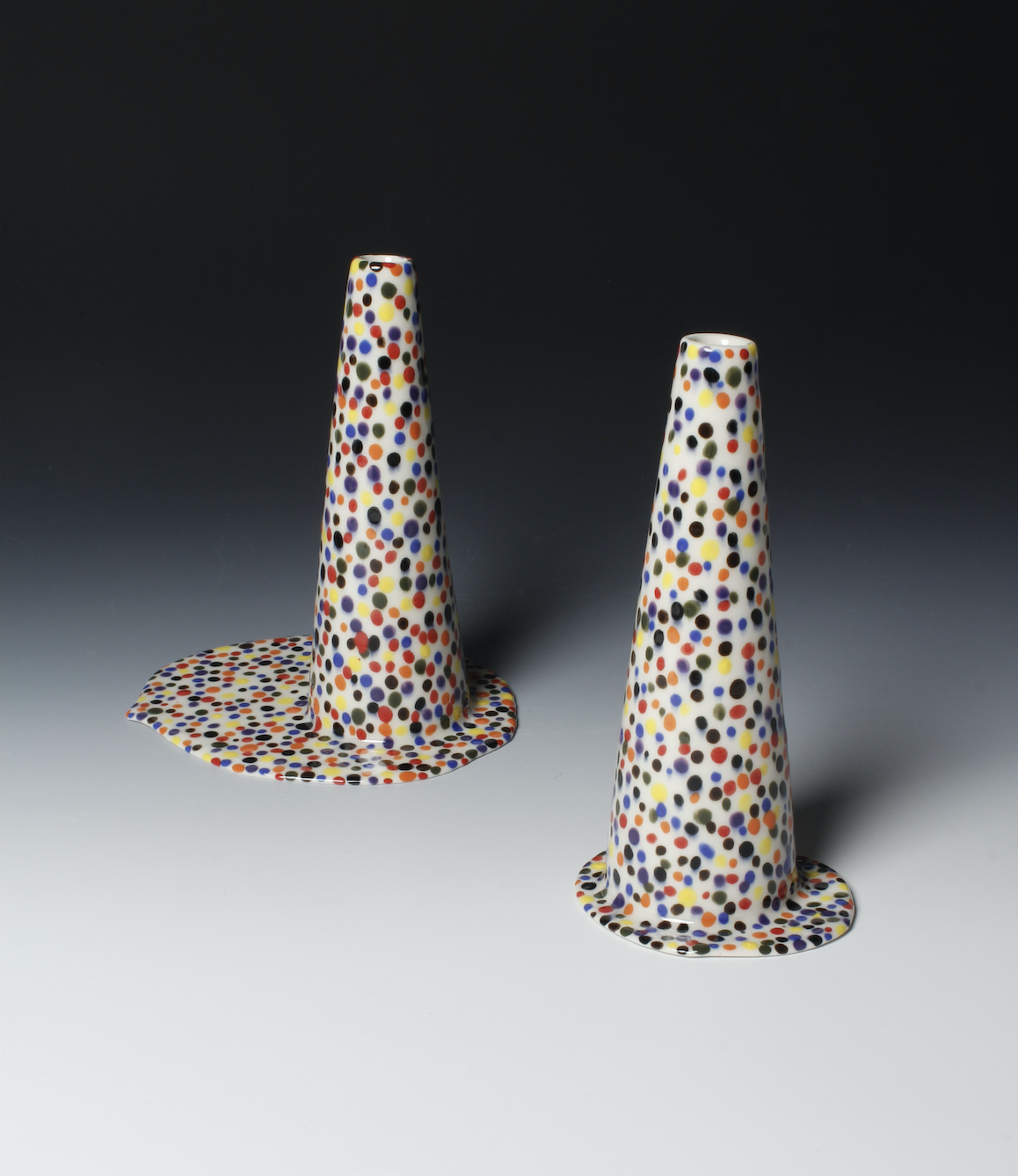 Be approachable (Be nice. Be kind.)
Be approachable (Be nice. Be kind.)
• Facilitate discussion (student engagement and interaction)
• Give feedback aimed at improving performance (coaching)
• Provide clarity in organization and grading (network for learning)
• Encourage respect for diversity (a caring and trustworthy community)
• Establish relevance to current and real-life situations (community)
• Encourage students to think (creative problem-solving)
These traits not only fit the wholehearted teacher but also the wholehearted individual.
For More on the Pride Pots: Community Conversations Project
The Pride Pots: Community Conversations project is additionally funded by a Catalyst Grant awarded by the David Orr Belcher College of Fine and Performing Arts at Western Carolina University. Speedball, a North Carolina company, is sponsoring Pride Pots: Community Conversations with underglazes.
The Pride Pots: Community Conversations exhibition will take place April 29 through July 3, 2023, at The Clay Studio in Philadelphia during Philly Pride.
In Memory of Jen Gordon
The National Council on Education for the Ceramic Arts, student director at large, and Pride Pots: Community Conversations graduate assistant, Jen Gordon, passed away on October 19, 2022.
Jen was a mixed media installation artist, arts administrator, public facilitator, researcher, business owner, and writer based in North Carolina. She was a beloved mother, sister, daughter, wife, teacher, student, mentor, and friend. Before she passed, Jen contributed initial funding that will be used to create a scholarship for the WCU School of Art & Design's MFA program. The purpose of the scholarship is to provide financial support to an underrepresented candidate in the MFA program with an interest in ceramics, service learning, and community engagement. Gifts made in her memory will also support this scholarship fund.
Full obituary: https://www.citizen-times.com/obituaries/act103589
The Studio Potter writer's honorarium has been kindly donated, by the authors, to Jen Gordons's scholarship. For more on giving to the scholarship: https://www.givecampus.com/campaigns/32835/donations/new\
More About the Authors
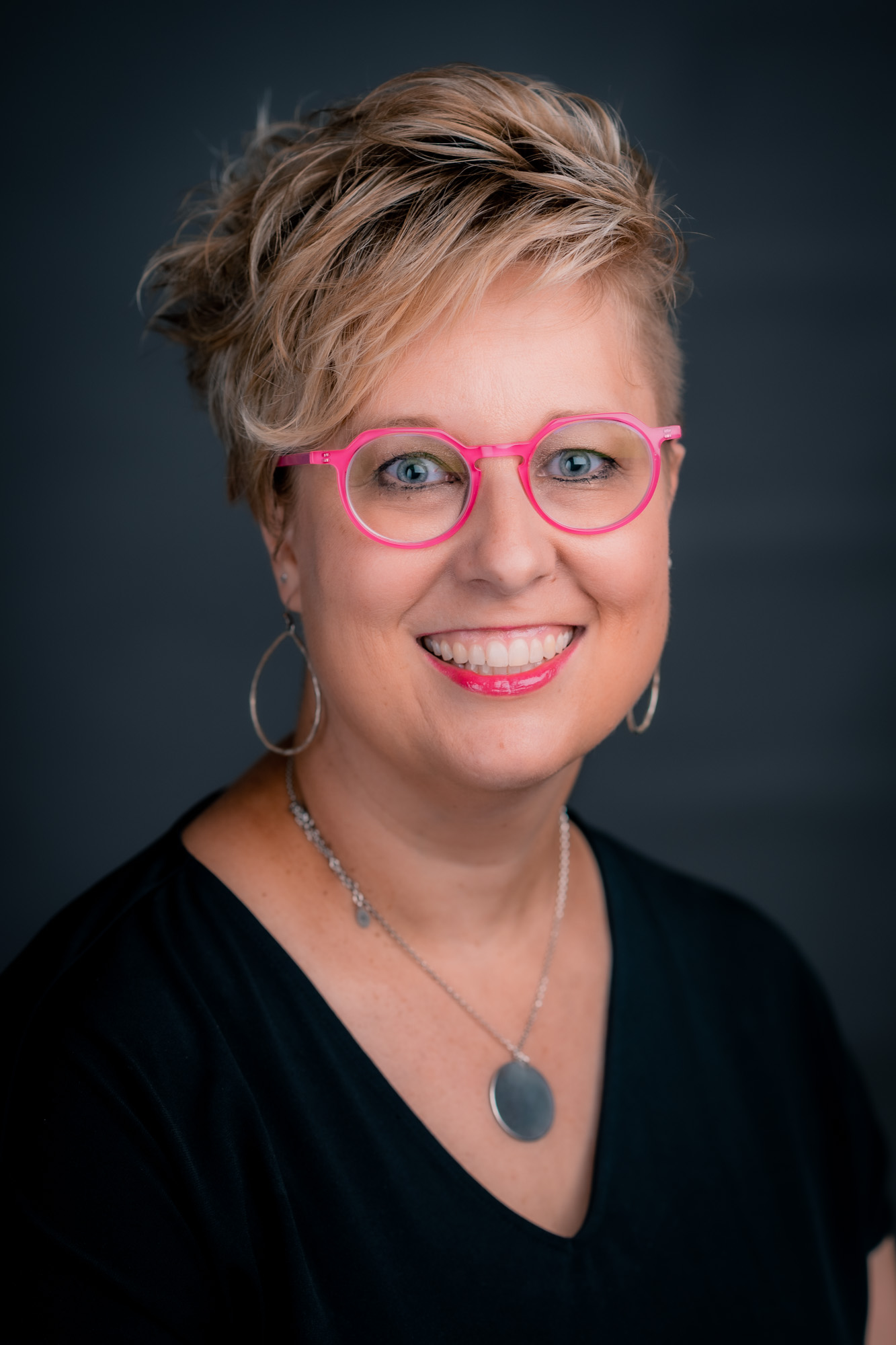 Betsy Crawford is an assistant professor in the Department of Teacher Education at Fort Hays State University. She is a nationally certified school psychologist and earned a doctorate in special education from Kansas State University. Her interests include arts-based qualitative research, classroom management, special education, diversity, inclusion, equity, and belonging. Crawford was awarded the 2020 FHSU College of Education Outstanding Teaching Award.
Betsy Crawford is an assistant professor in the Department of Teacher Education at Fort Hays State University. She is a nationally certified school psychologist and earned a doctorate in special education from Kansas State University. Her interests include arts-based qualitative research, classroom management, special education, diversity, inclusion, equity, and belonging. Crawford was awarded the 2020 FHSU College of Education Outstanding Teaching Award.
Her experience as a school psychologist prior to teaching at the university level helped provide Crawford with real-world experiences to share with students in class while supporting those with diverse talents and challenges. Each person learns differently, and our differences are beautiful.
Crawford's training, research, and experience assist in identifying students' individual needs and talents by building relationships with them. Strong relationships are key. Learners and educators persevere and are more engaged when working with those who see them as individuals with unique characteristics, abilities, and experiences. Throughout
Crawford's classes, she incorporates as many opportunities as possible to develop personal associations with students while maintaining rigor and high expectations for all.
Crawford’s dissertation research focused on two artists who earned MFA degrees and navigated language-based exceptionalities while in PK-12th grade and higher education. Her continued research includes art-based methods of data collection and interpretation. Crawford’s doctoral training supports her continued research across educational and psychological best practices. Other current research focuses on empathetic practices in teaching, leadership, and working with colleagues – topics that tie wholehearted teaching and learning experiences to helping creative students reach their highest potential.
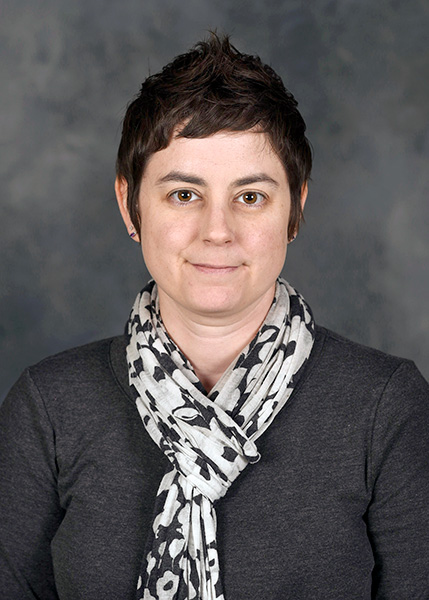 Heather Mae Erickson earned a BFA from the University of the Arts (UArts) and an MFA from Cranbrook. She was a summer resident at the Archie Bray Foundation and was also awarded a Fulbright to study at Aalto University in Helsinki, Finland. She was a resident artist at The Clay Studio from 2006 to 2009 while teaching at UArts, Rowan, and Arcadia. She has earned numerous awards, including first place for the Horizon Award presented by the Museum of Art and Design in New York. She was awarded an Independence Fellowship for her 2009 residency at the Guldagergaard International Ceramic Research Center in Denmark. She was the 2009-2012 Robert Turner Teaching Fellow at Alfred University. In 2012, she moved to Colorado, where she taught at the Rocky Mountain College of Art and Design, Red Rocks Community College, Colorado Mountain College Aspen Campus, and Arapahoe Community College. From 2013 to 2014, she was a visiting teaching artist and sabbatical replacement at CU Boulder. Erickson is currently an associate professor at Western Carolina University.
Heather Mae Erickson earned a BFA from the University of the Arts (UArts) and an MFA from Cranbrook. She was a summer resident at the Archie Bray Foundation and was also awarded a Fulbright to study at Aalto University in Helsinki, Finland. She was a resident artist at The Clay Studio from 2006 to 2009 while teaching at UArts, Rowan, and Arcadia. She has earned numerous awards, including first place for the Horizon Award presented by the Museum of Art and Design in New York. She was awarded an Independence Fellowship for her 2009 residency at the Guldagergaard International Ceramic Research Center in Denmark. She was the 2009-2012 Robert Turner Teaching Fellow at Alfred University. In 2012, she moved to Colorado, where she taught at the Rocky Mountain College of Art and Design, Red Rocks Community College, Colorado Mountain College Aspen Campus, and Arapahoe Community College. From 2013 to 2014, she was a visiting teaching artist and sabbatical replacement at CU Boulder. Erickson is currently an associate professor at Western Carolina University.
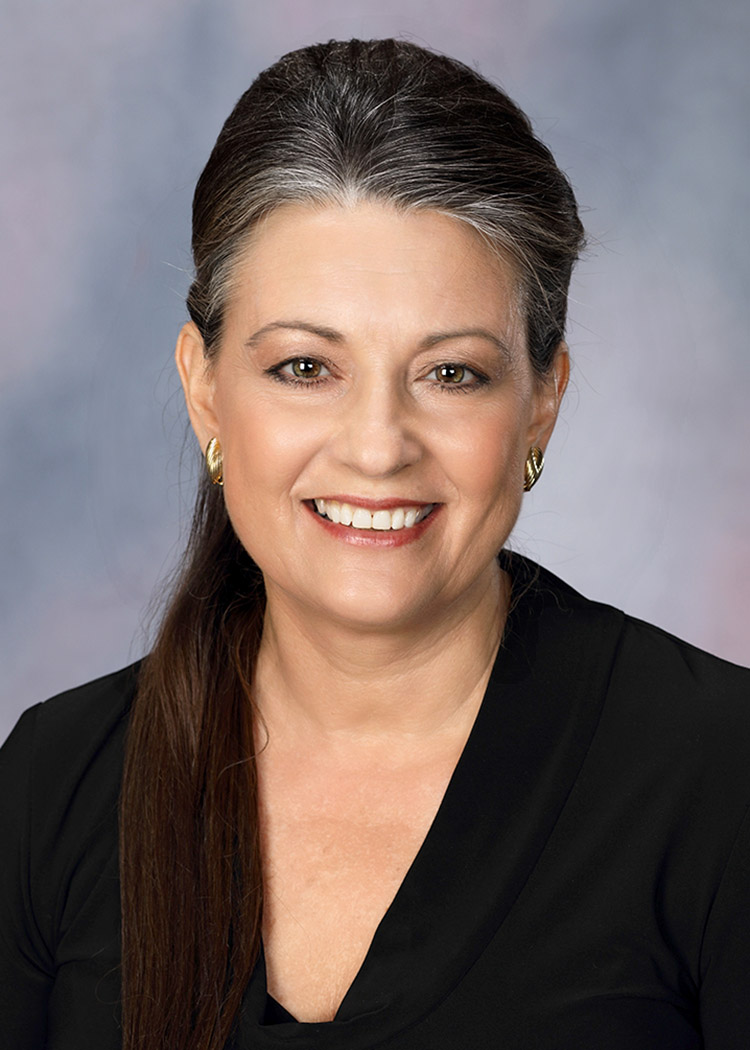 Linda Ganstrom: As a child raised on a Kansas farm, Ganstrom found joy in outdoor, imaginative play and remembers her first experiences with clay when she created impressions of leaves and flowers in the soft mud. As a young adult, she was attracted to the discipline and self-expression offered by ceramic art. Working in ceramics for over four decades, Linda Ganstrom explores issues relating her personal experiences to big-picture questions primarily through figurative ceramics. Her figures have undergone many evolutions as she uses them to understand herself, the world around her, and express her truth. After earning three degrees from Fort Hays State University in Hays, Kansas, she currently serves as their professor of art and design, teaching ceramics in an amazing new facility. She lives and works in Hays, Kansas, and shares a studio with her husband, the ceramic artist Sheldon Ganstrom. She served as the exhibitions director for NCECA from 2008 to 2014 and currently leads the NCECA Collectors Tour.
Linda Ganstrom: As a child raised on a Kansas farm, Ganstrom found joy in outdoor, imaginative play and remembers her first experiences with clay when she created impressions of leaves and flowers in the soft mud. As a young adult, she was attracted to the discipline and self-expression offered by ceramic art. Working in ceramics for over four decades, Linda Ganstrom explores issues relating her personal experiences to big-picture questions primarily through figurative ceramics. Her figures have undergone many evolutions as she uses them to understand herself, the world around her, and express her truth. After earning three degrees from Fort Hays State University in Hays, Kansas, she currently serves as their professor of art and design, teaching ceramics in an amazing new facility. She lives and works in Hays, Kansas, and shares a studio with her husband, the ceramic artist Sheldon Ganstrom. She served as the exhibitions director for NCECA from 2008 to 2014 and currently leads the NCECA Collectors Tour.
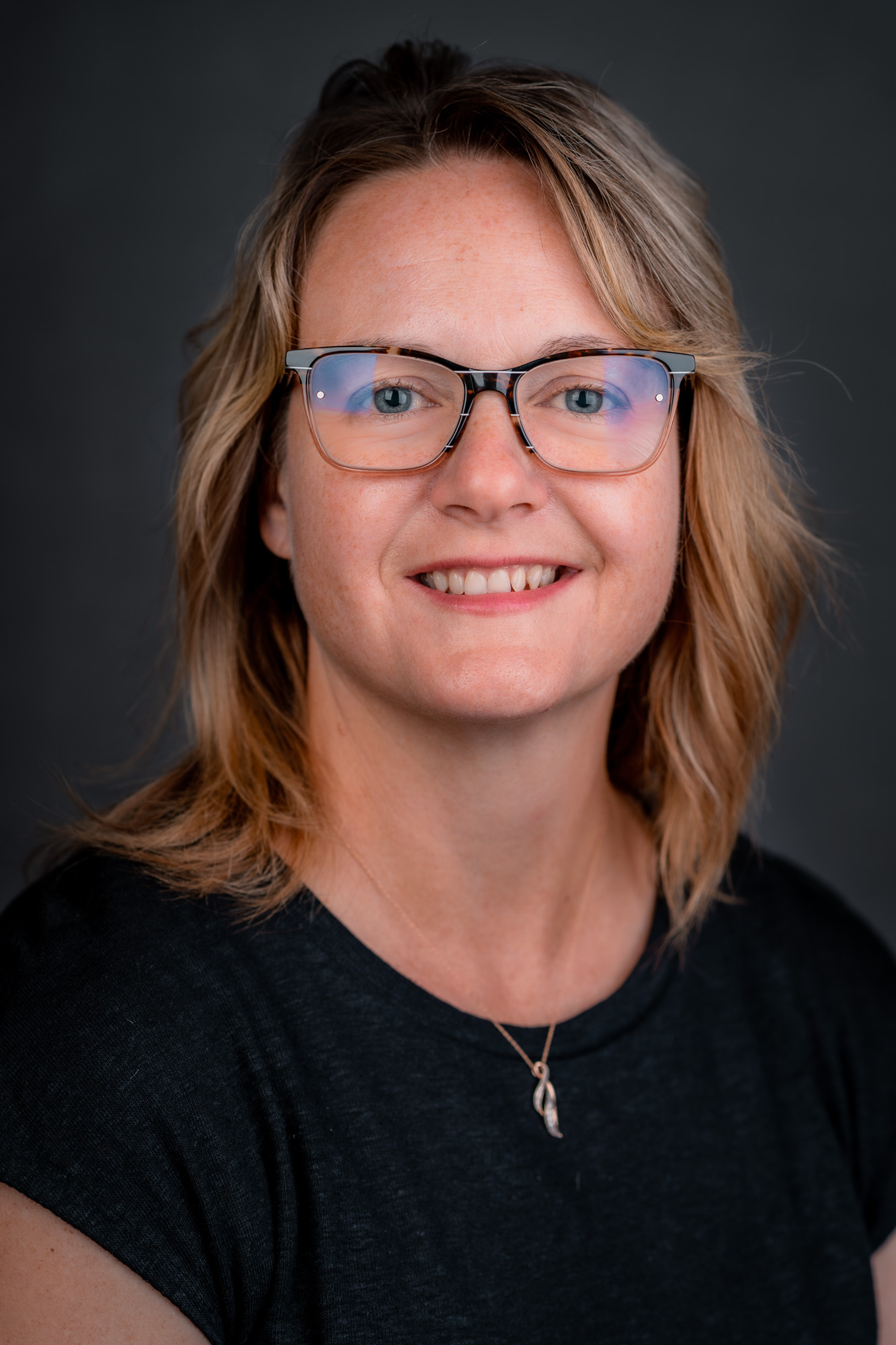 Latisha Haag is the faculty development training specialist for the Teaching Innovations and Learning Technologies (TILT) department at Fort Hays State University, as well as an adjunct professor in the Communication Studies department. Alongside teaching courses for students and faculty, she coordinates opportunities for professional development for faculty and staff through traditional face-to-face events, online synchronous events, and asynchronous trainings. Additionally, she is the co-chair of the Adjunct Faculty Advisory Committee and coordinates the new adjunct faculty training asynchronous course. She serves on the Faculty Development Committee and chairs the subcommittees for faculty development needs assessment and global partnerships faculty professional development needs assessment. Haag is one of the founding producers of TILT Talk, a podcast for faculty about teaching and learning, scholarly research, and service.
Latisha Haag is the faculty development training specialist for the Teaching Innovations and Learning Technologies (TILT) department at Fort Hays State University, as well as an adjunct professor in the Communication Studies department. Alongside teaching courses for students and faculty, she coordinates opportunities for professional development for faculty and staff through traditional face-to-face events, online synchronous events, and asynchronous trainings. Additionally, she is the co-chair of the Adjunct Faculty Advisory Committee and coordinates the new adjunct faculty training asynchronous course. She serves on the Faculty Development Committee and chairs the subcommittees for faculty development needs assessment and global partnerships faculty professional development needs assessment. Haag is one of the founding producers of TILT Talk, a podcast for faculty about teaching and learning, scholarly research, and service.
Additionally, she is the co-chair elect of the Professional Organizational Development Network special interest group for adjunct faculty. She has recently attended and presented at conferences such as Leadership in Higher Ed, the Pandemic Pedagogy Symposium, the Summer Institute on Distance Learning and Technology, the Mountain-Plains Business Education Association Regional Conference, and the Big XII Teaching & Learning Conference. Her research interests include online student engagement, wholehearted teaching, mentoring, and other strategies for teaching and learning.
Notes:
[1] Brené Brown, The Gifts of Imperfection (London: Vermilion, 2020).
[2] Admin, “10 Habits of Wholehearted Teachers,” A Teacher's Best Friend, November 22, 2015, https://www.ateachersbestfriend.com/10-habits-of-wholehearted-teachers/.
[3] Parker J. Palmer, The Courage to Teach: Exploring the Inner Landscape of a Teacher's Life (New York: Wiley, 2017).
[4] Robert B. Barr and John Tagg, “From Teaching to Learning – A New Paradigm for Undergraduate Education.” Change, (1995) 12-2.
[5] L. Dee Fink, Creating Significant Learning Experiences: An Integrated Approach to Designing College Courses (San Francisco, CA: Jossey-Bass, 2013).
[6] Ernest L. Boyer et al., Scholarship Reconsidered: Priorities of the Professoriate (San Francisco, CA: Jossey-Bass, 2016).
[7] American Association of State Colleges and Universities, “Members,” accessed December 8, 2022, http://aascu.org/members/.

